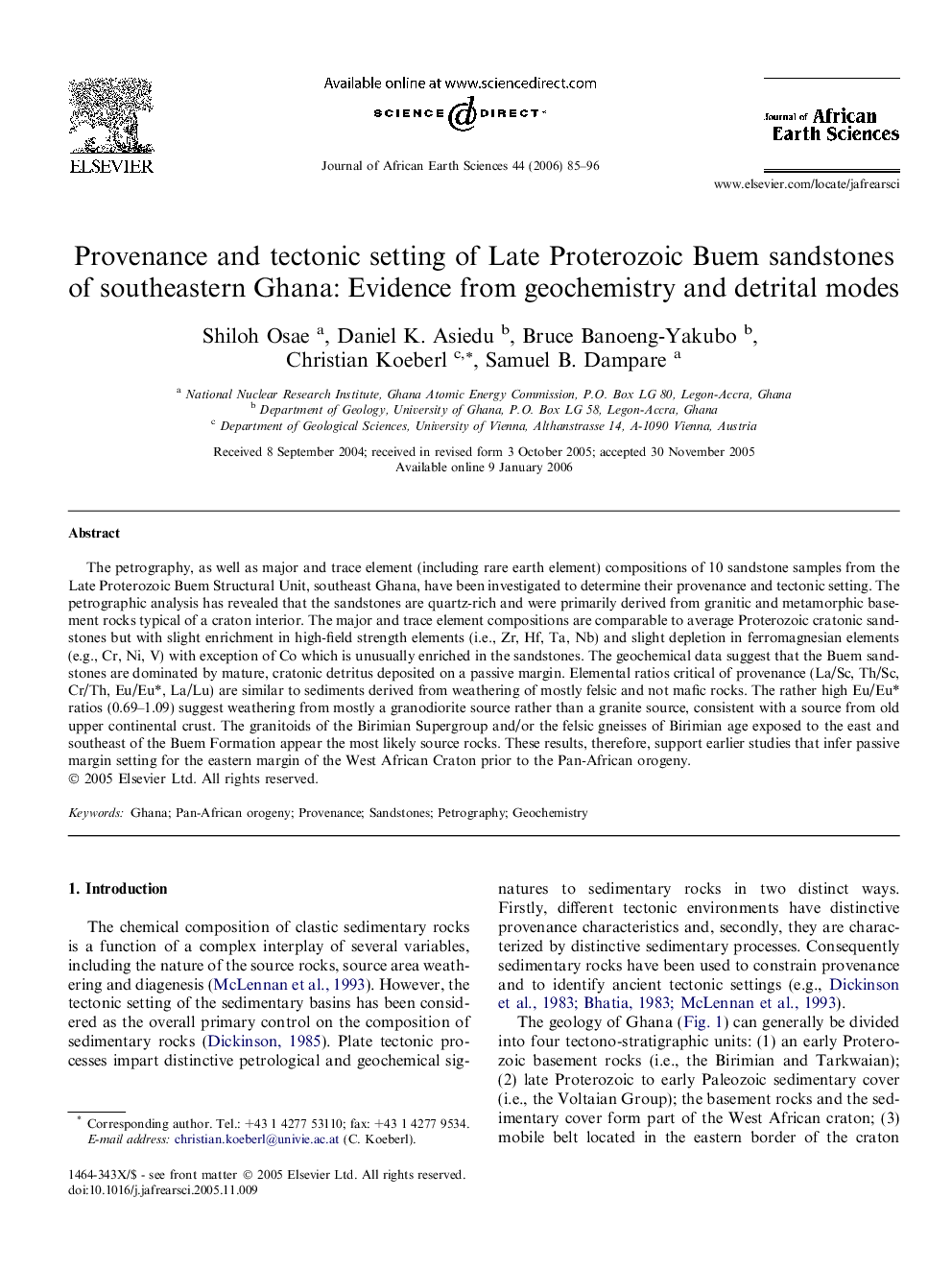| Article ID | Journal | Published Year | Pages | File Type |
|---|---|---|---|---|
| 4729591 | Journal of African Earth Sciences | 2006 | 12 Pages |
The petrography, as well as major and trace element (including rare earth element) compositions of 10 sandstone samples from the Late Proterozoic Buem Structural Unit, southeast Ghana, have been investigated to determine their provenance and tectonic setting. The petrographic analysis has revealed that the sandstones are quartz-rich and were primarily derived from granitic and metamorphic basement rocks typical of a craton interior. The major and trace element compositions are comparable to average Proterozoic cratonic sandstones but with slight enrichment in high-field strength elements (i.e., Zr, Hf, Ta, Nb) and slight depletion in ferromagnesian elements (e.g., Cr, Ni, V) with exception of Co which is unusually enriched in the sandstones. The geochemical data suggest that the Buem sandstones are dominated by mature, cratonic detritus deposited on a passive margin. Elemental ratios critical of provenance (La/Sc, Th/Sc, Cr/Th, Eu/Eu*, La/Lu) are similar to sediments derived from weathering of mostly felsic and not mafic rocks. The rather high Eu/Eu* ratios (0.69–1.09) suggest weathering from mostly a granodiorite source rather than a granite source, consistent with a source from old upper continental crust. The granitoids of the Birimian Supergroup and/or the felsic gneisses of Birimian age exposed to the east and southeast of the Buem Formation appear the most likely source rocks. These results, therefore, support earlier studies that infer passive margin setting for the eastern margin of the West African Craton prior to the Pan-African orogeny.
